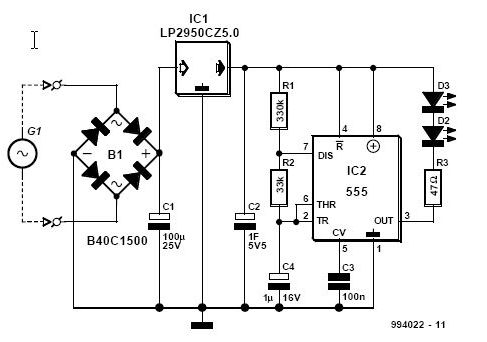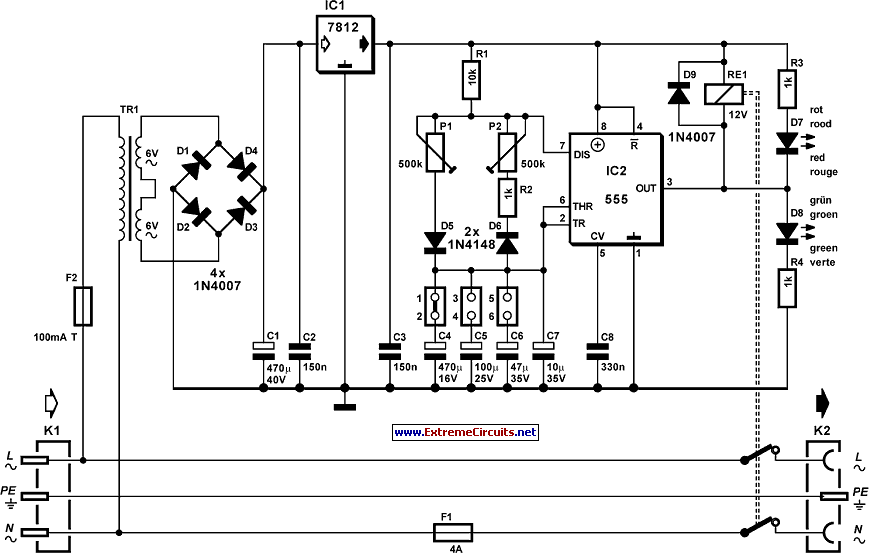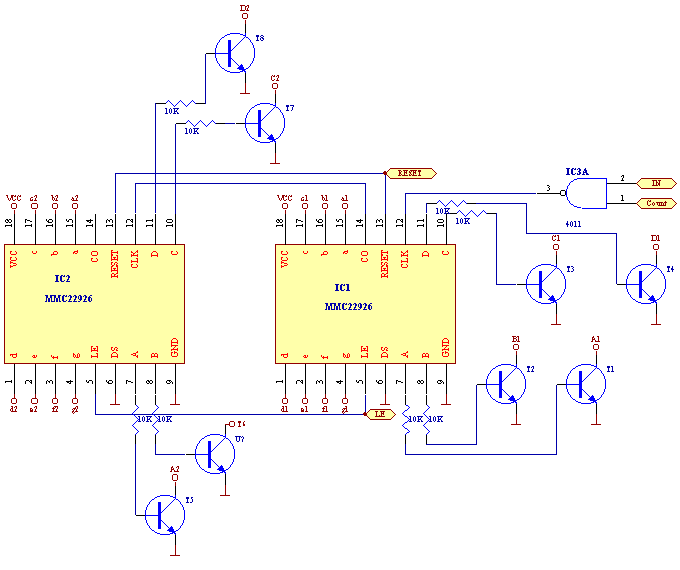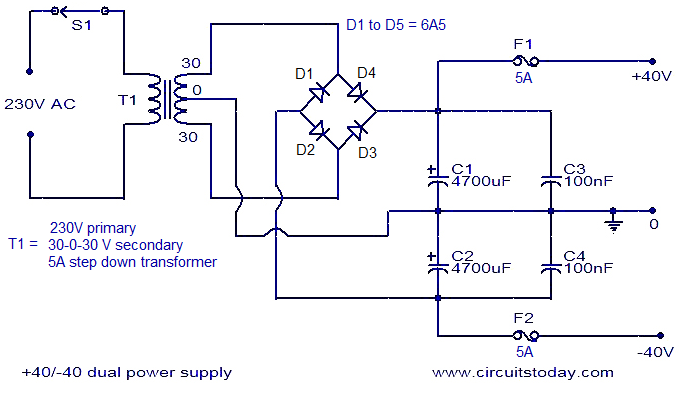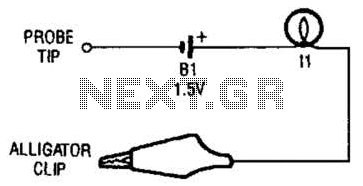
digital step km counter circuit schematic
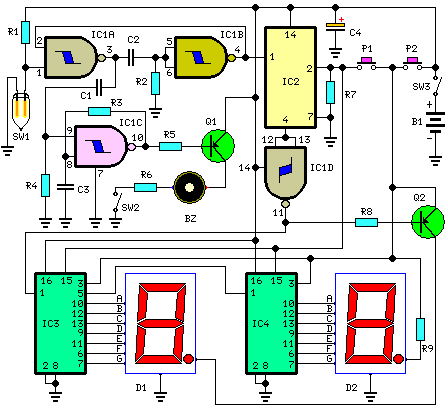
This circuit measures the distance covered during a walk. The hardware is housed in a compact box that can be conveniently placed in a pants pocket. The display is designed as follows: the leftmost display, D2 (the most significant digit), indicates kilometers ranging from 0 to 9. A dot is constantly illuminated to differentiate kilometers from hectometers. The rightmost display, D1 (the least significant digit), shows the distance in hundreds of meters, with its dot lighting up after every 50 meters of walking.
The distance measurement circuit utilizes a microcontroller to process input from a distance sensor, which may be based on an accelerometer or a GPS module, depending on the required accuracy and application. The microcontroller receives data regarding the movement of the user, calculating the distance traveled based on the frequency of detected steps or changes in position.
The display consists of two seven-segment displays, D2 and D1, which are driven by the microcontroller through a suitable driver circuit. The display for D2 continuously shows the kilometers, while D1 updates every time the user covers an additional 50 meters, providing a granular view of the distance covered. The implementation of a dot indicator on both displays serves to enhance user understanding of the distance metrics being presented.
Power management is crucial for portable devices, and this circuit may incorporate a low-power design to extend battery life. A compact lithium-ion battery could be used to power the circuit, with a voltage regulator ensuring that the microcontroller and display operate within their specified voltage ranges.
The circuit may also include a user interface element, such as a button, allowing the user to reset the distance measurement or switch between different modes of operation. Additionally, if the application permits, data logging capabilities could be integrated to allow users to track their walking distance over time, enhancing the functionality of the device.
Overall, this distance measurement circuit is a practical solution for individuals seeking to monitor their walking activity, combining compact hardware design with an intuitive display for ease of use.This circuit measures the distance covered during a walk. Hardware is located in a small box slipped in pants` pocket and the display is conceived in the following manner: the leftmost display D2 (the most significant digit) shows 0 to 9 Km. and its dot is always on to separate Km. from hm. The rightmost display D1 (the least significant digit) shows hundreds meters and its dot illuminates after every 50 meters of walking..
🔗 External reference
The distance measurement circuit utilizes a microcontroller to process input from a distance sensor, which may be based on an accelerometer or a GPS module, depending on the required accuracy and application. The microcontroller receives data regarding the movement of the user, calculating the distance traveled based on the frequency of detected steps or changes in position.
The display consists of two seven-segment displays, D2 and D1, which are driven by the microcontroller through a suitable driver circuit. The display for D2 continuously shows the kilometers, while D1 updates every time the user covers an additional 50 meters, providing a granular view of the distance covered. The implementation of a dot indicator on both displays serves to enhance user understanding of the distance metrics being presented.
Power management is crucial for portable devices, and this circuit may incorporate a low-power design to extend battery life. A compact lithium-ion battery could be used to power the circuit, with a voltage regulator ensuring that the microcontroller and display operate within their specified voltage ranges.
The circuit may also include a user interface element, such as a button, allowing the user to reset the distance measurement or switch between different modes of operation. Additionally, if the application permits, data logging capabilities could be integrated to allow users to track their walking distance over time, enhancing the functionality of the device.
Overall, this distance measurement circuit is a practical solution for individuals seeking to monitor their walking activity, combining compact hardware design with an intuitive display for ease of use.This circuit measures the distance covered during a walk. Hardware is located in a small box slipped in pants` pocket and the display is conceived in the following manner: the leftmost display D2 (the most significant digit) shows 0 to 9 Km. and its dot is always on to separate Km. from hm. The rightmost display D1 (the least significant digit) shows hundreds meters and its dot illuminates after every 50 meters of walking..
🔗 External reference
